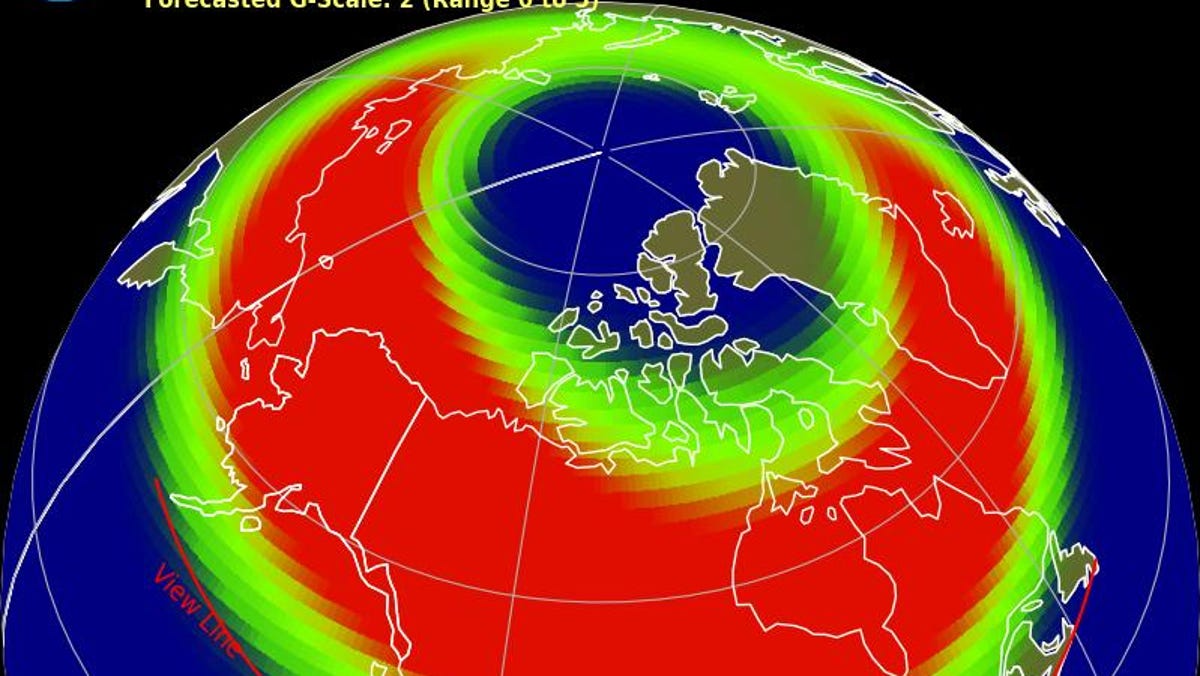Northern Lights spectacle: The science behind the aurora borealis
Ever wonder how the northern lights occur? Unique solar events occasionally allow northern U.S. states to view the aurora borealis.
A geomagnetic storm watch has been issued for Monday and Tuesday, which may result in the aurora borealis, or the northern lights, to be visible over some U.S. states.
On Saturday, NOAA’s Space Weather Prediction Center observed a corneal mass ejection, or an eruption of solar material, lifting off of the sun. It is expected to cause up to moderate geomagnetic storming.
Watches of this level for geomagnetic storms are not uncommon, according to the Space Weather Prediction Service, and the general public does not need to be concerned. It could, however, result in the aurora visible in multiple northern continental states, from New York, to the Midwest and Idaho.
Here’s what to know about when and where to watch the aurora this week.
Aurora lovers, rejoice: 2024 could be a great year for northern lights, due to solar maximum
Where to see the aurora in the U.S.
Some states already had the chance to see the aurora on Sunday, and luckily, visibility is forecasted to grow Monday.
Alaska, thanks to its northern location, already has a high likelihood of seeing the aurora, but with the geothermal storm, other states may also catch a glimpse.
According to the Space Weather Prediction Center’s forecast for Monday, the view line, denoted by the red line, could make them visible in these 17 states: Maine, New Hampshire, Vermont, New York, Michigan, Illinois, Iowa, Wisconsin, Minnesota, Nebraska, North Dakota, South Dakota, Montana, Wyoming, Idaho, Oregon and Washington.
While seeing the aurora may be in the forecast, there are factors that influence how likely you may see the lights. According to the Aurora Zone, the sun’s activity, cloud cover and solar winds can all affect the likelihood of seeing the aurora. If your area’s forecast looks clear, there’s a better chance you may see the aurora than on a cloudier night.
The NOAA notes it is possible to predict aurora a day or so in advance, though more accurate predictions can be measured between 15-45 minutes in advance.
The lights may be visible from 7 p.m. to 7 a.m. EST in the U.S. To keep up to date, check the Space Weather Prediction Center’s 30-minute aurora forecast.
How to see the northern lights
The northern lights aren’t as common in the Lower 48 of the U.S., so seeing them with the naked eye can be an uncommon occurrence.
When you’re looking for the northern lights, try using your camera if you’re not seeing anything. The devices are known to pick up the lights better than the human eye.
Make sure to look closely, because faint levels of aurora can sometimes look like white clouds.
What is a geomagnetic storm?
According to the Space Weather Prediction Center, a geomagnetic storm is caused by a major disturbance of Earth’s magnetosphere. It occurs when there is an exchange of energy from solar wind into the space environment surrounding the planet.
Large geomagnetic storms are associated with solar coronal mass ejections, where around a billion tons of plasma from the sun arrive at Earth. The geomagnetic storm that may cause the northern lights to be visible over the coming days is a result of coronal mass ejections, which typically take a few days to arrive at Earth.
What is the aurora?
An aurora is the glow that results when electrons from space collide with atoms and molecules in the Earth’s upper atmosphere.
Depending on the hemisphere, the aurora may go by a different name: aurora borealis, or northern lights in the Northern Hemisphere, and aurora australis, or the southern lights in the Southern Hemisphere.
Thanks to Earth’s magnetic field, the aurora is typically formed around the North and South poles, but geomagnetic storms can cause their visibility to be even greater.
The aurora typically forms 80 to 500 kilometers above the Earth’s surface.
When you can see the aurora in 2024
Even is you miss the aurora borealis caused by the geomagnetic storm, there are other chances to see activity caused by the sun.
We are approaching the peak of Solar Cycle 25, according to the NOAA, and can expect to see more sunspots, causing solar flares and coronal mass ejections. The NOAA says this period of elevated activity can last up to several years, with impactful space weather events possible in 2024.

Daisy Hips is a science communicator who brings the wonders of the natural world to readers. Her articles explore breakthroughs in various scientific disciplines, from space exploration to environmental conservation. Daisy is also an advocate for science education and enjoys stargazing in her spare time.







